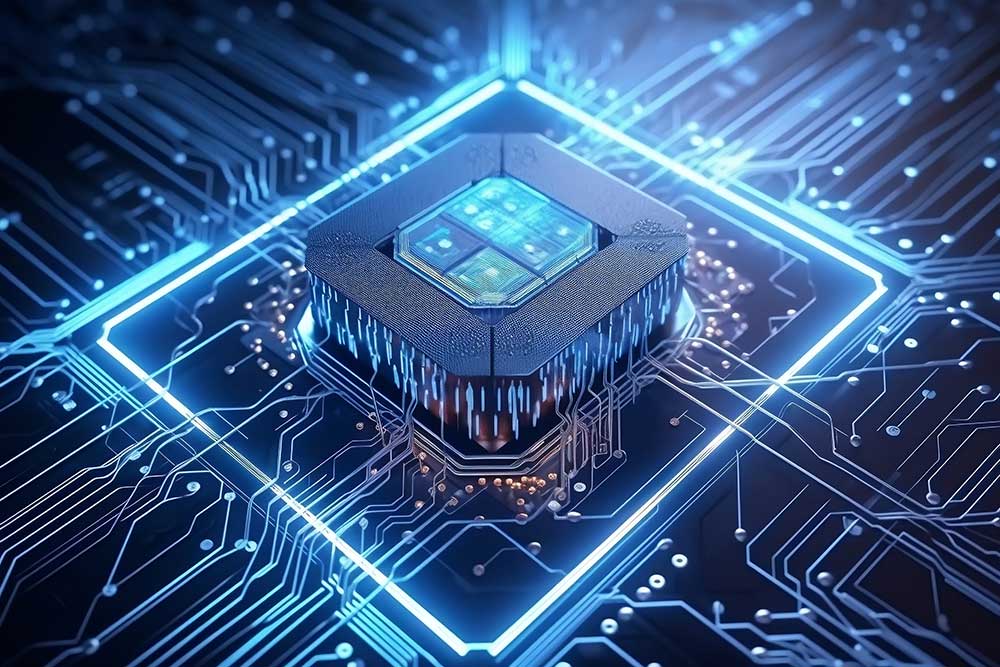In modern manufacturing, magnetic applications are indispensable. From permanent magnets in drives to sensors and separation technologies. But the most significant transformation is happening at the intersection of magnets and artificial intelligence (AI).
Especially in high-performance sectors such as e-mobility, defense, and aerospace (where precision, reliability, and performance under extreme conditions are crucial) this combination unlocks unprecedented possibilities.

Why are magnetic applications critical in manufacturing-, defense-, and aerospace industry?
Magnetic technology enables contactless transfer of power, data, and motion. It is highly reliable, compact, and resistant to harsh conditions. That’s why magnets are widely used in:
- Robotics and automation in advanced production lines
- Drives in drones, rocket systems, and guided weapons
- Navigation and positioning systems based on magnetic sensors
- Magnetic couplings for emission-free and low-maintenance transmissions
- Precision components in medical and military applications
In defense and aerospace especially, the demands are extreme: low weight, high power density, and flawless performance under vibration, heat, or vacuum. Think of magnets that operate up to 300°C, or samarium-cobalt solutions that remain magnetically stable in space.

The role of AI: from automated maintenance to self-learning systems
Artificial intelligence enhances the power of magnetic technology by enabling:
- Predictive maintenance of motors and actuators, crucial for mission-critical systems
- AI analysis of magnetic data for real-time fault detection and autonomous system behavior
- Motion optimization of magnetic grippers in industrial and military robots
- Smart separation technology for recycling classified material (e.g., rare earth elements)
In aerospace, for example, AI is used to optimize electric propulsion systems with permanent magnets based on flight conditions, weight, and temperature.

High power density and compact performance for demanding applications
Permanent magnet (PM) technology delivers up to 5 kW/kg in power density, far higher than traditional motors. This is essential for unmanned systems, rocket launches, or airships.
Thanks to this high performance, weight is saved without compromising on power or control, a must in both satellite technology and portable military equipment. At Bakker Magnetics, we design advanced magnet assemblies with minimal tolerances, durable bonding, and optimized field distribution for use in manufacturing, aerospace, and defense.

Smart magnetics: when hardware meets software
The fusion of magnets, sensors, and AI leads to so-called “smart magnetics.” Examples include:
- AI-driven motor controllers that adapt magnetic behavior in real-time to the environment or task
- Edge computing in magnetic modules for autonomous fault analysis without network connection
- Digital twins of magnetic drives for scenario simulations in R&D or mission planning

Sustainability and innovation in the high-tech industry
AI helps extract maximum value from each magnet: more power, less energy, longer lifespan. This contributes to:
- Lower CO₂ emissions in manufacturing
- Smart energy generation with magnetic generators in wind, aviation, and space applications
- Efficient material recovery in the recycling and defense sectors (e.g., rare earth magnets)
At Bakker Magnetics, we develop magnetic solutions for e-mobility, product processing, renewable energy, maritime and military systems that meet the highest standards in efficiency, reliability, and sustainability.

Smart magnets for a safer, more efficient world
The combination of magnetic technology and AI is not a gimmick, it is a strategic asset in manufacturing, defense, and aerospace. Companies investing in this innovation achieve:
- Higher performance with less material
- Better fault prediction and system safety
- Lower costs and environmental impact
Bakker Magnetics delivers custom solutions for both civilian and military applications, from magnet assemblies to high-performance drives for UAVs (Unmanned Aerial Vehicles), defense systems, and industrial robots.







